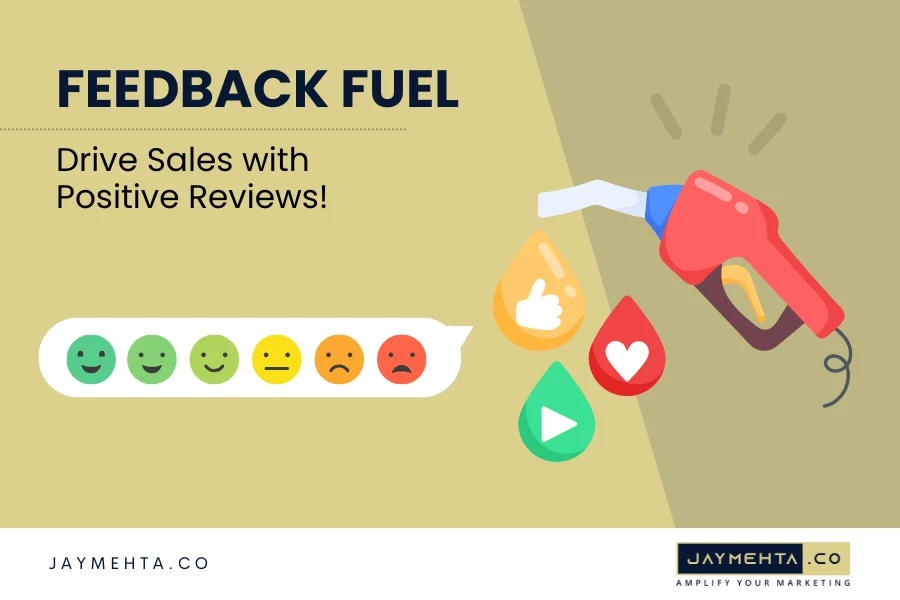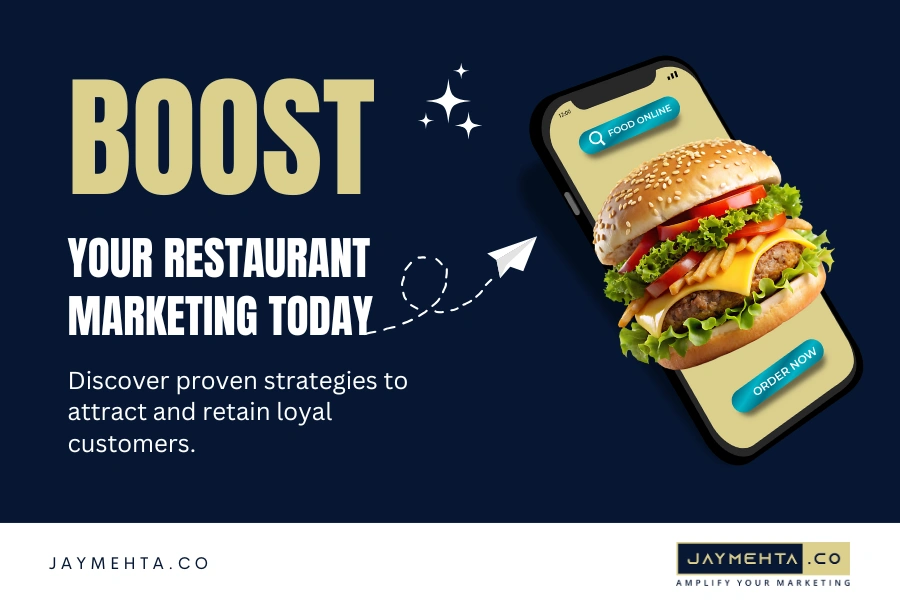In a world dominated by technology, digital marketing pillars have become the cornerstone of business success. With the constant evolution of online platforms, it’s vital for businesses to harness the right strategies to stand out. But with so many options available, where do you start?
The answer lies in understanding the essential pillars of digital marketing. These pillars not only provide a solid foundation for your marketing strategy but also help you create a cohesive approach that resonates with your audience. In this comprehensive guide, we’ll break down each digital marketing pillar, giving you insights into how they work and why they matter.
Search Engine Optimization (SEO): The Cornerstone of Visibility
Search Engine Optimization (SEO) is one of the primary digital marketing pillars, essential for improving a website’s visibility in search engine results pages (SERPs). The goal is to drive organic traffic, enhance the user experience, and boost conversion rates.
Key Components of SEO
-
On-Page SEO
This involves optimizing individual web pages to improve their ranking in search engines. Key factors include
-
Keyword Research
Identifying relevant keywords that potential customers use to search for products or services. Use tools like Google Keyword Planner or SEMrush to discover high-volume keywords.
-
Content Quality
Creating high-quality, informative, and engaging content that addresses user intent. Ensure the content is structured with proper headings, bullet points, and images to enhance readability.
-
Meta Tags
Optimizing title tags, meta descriptions, and header tags with targeted keywords. These elements inform search engines about the content of the page.
-
-
Technical SEO
Technical SEO focuses on optimizing the infrastructure of your website. Important aspects include
-
Site Speed
Ensuring your website loads quickly is critical for both user experience and SEO. Tools like Google PageSpeed Insights can help analyze and improve load times.
-
Mobile-Friendliness
With the rise of mobile browsing, ensuring your website is responsive and mobile-friendly is crucial. Google prioritizes mobile-friendly sites in its rankings.
-
Site Architecture
Organizing your site structure for easy navigation. A well-structured website improves user experience and helps search engines crawl and index your site more efficiently.
-
-
Off-Page SEO
Off-page SEO involves actions taken outside of your website to impact your rankings. Key strategies include
-
Backlink Building
Earning high-quality backlinks from reputable websites can enhance your site’s authority. Focus on guest blogging, partnerships, and creating shareable content to attract links.
-
Social Media Engagement
Promoting your content on social media platforms can drive traffic and increase brand visibility. Engage with your audience and share valuable insights.
-
-
Local SEO
As a crucial sub-component of SEO, local SEO focuses on optimizing your online presence to attract local business. This involves
-
Google My Business
Ensure your GMB listing is accurate and fully optimized to improve visibility in local search results.
-
Local Keywords
Use location-based keywords in your content and metadata, like “best bakery in Austin,” to attract local customers.
-
NAP Consistency
Maintain consistent Name, Address, and Phone number across all online platforms to enhance credibility.
-
Local Citations
List your business on local directories and review sites to improve visibility.
-
Community Engagement
Participate in local events to increase brand recognition and connect with the community.
-
Related Blog: Personalization Tips to Dominate Google Local Search
Pay-Per-Click Advertising (PPC): Immediate Traffic Generation
Pay-Per-Click (PPC) advertising is a key element of the digital marketing pillar that involves placing ads on search engines and other platforms, where businesses pay each time their ad is clicked. PPC is an effective way to drive targeted traffic and increase visibility quickly.
Key Components of PPC Advertising
-
Keyword Selection
Choosing the right keywords is crucial for PPC success. Key strategies include
-
Researching Competitors
Analyze competitors’ keywords to identify high-performing terms. Use tools like SpyFu and SEMrush to gather insights.
-
Negative Keywords
Implement negative keywords to prevent your ads from appearing in irrelevant searches. This helps reduce wasted spend and improve ROI.
-
-
Ad Creation
Crafting compelling ads is essential for attracting clicks. Key elements include
-
Ad Copy
Write clear and persuasive ad copy that highlights your unique selling points (USPs). Use action-oriented language and include a strong call to action.
-
Visuals
For display ads, use eye-catching visuals that align with your brand. High-quality images or graphics can enhance engagement.
-
-
Landing Page Optimization
Ensure your landing pages are optimized for conversions. Important practices include
-
Relevance
Make sure your landing page content aligns with the ad’s promise. Consistency enhances user experience and increases conversions.
-
Clear CTAs
Include prominent calls to action on your landing page to guide users toward the desired action. Use action-oriented language to encourage clicks.
-
-
Monitoring and Optimization
Regularly monitor PPC campaigns to improve performance. Key metrics to track include
-
Click-Through Rate (CTR)
Measure the percentage of users who click on your ad. A higher CTR indicates effective ad copy and targeting.
-
Cost Per Acquisition (CPA)
Track the cost associated with acquiring a customer through PPC. Aim to lower CPA by optimizing ads and targeting.
-
Read also: PPC Management Guide: Maximize Your Profits
Content Marketing: Engaging and Educating Your Audience
Content marketing is a strategic marketing approach focused on creating and distributing valuable, relevant content to attract and engage a target audience. The ultimate goal of this digital marketing pillar is to drive profitable customer action.
Key Elements of Content Marketing
-
Content Creation
High-quality content is the cornerstone of successful content marketing. Strategies include
-
Blogging
Regularly publishing blog posts that address your audience’s questions and challenges can establish your brand as an authority in your niche. Ensure content is well-researched and informative.
-
Visual Content
Use images, infographics, and videos to enhance engagement. Visual content often performs better on social media and can simplify complex information.
-
-
Content Distribution
Creating content is just the first step; distributing it effectively is crucial. Key distribution channels include
-
Social Media
Share your content on various social media platforms to reach a wider audience. Tailor your messaging for each platform to maximize engagement.
-
Email Marketing
Use newsletters to share valuable content with your subscribers. Segment your audience to deliver personalized content that resonates with their interests.
-
-
SEO Integration
Integrating SEO best practices into your content marketing strategy can improve visibility. Key practices include
-
Keyword Optimization
Incorporate targeted keywords naturally into your content to improve search engine rankings. Use tools to identify relevant keywords for your audience.
-
Internal Linking
Use internal links to connect related content on your website, which can improve user navigation and boost SEO.
-
-
Measuring Success
Regularly track and analyze content performance to refine your strategy. Important metrics to consider include
-
Engagement Metrics
Monitor likes, shares, comments, and time spent on page to gauge content effectiveness. Higher engagement often correlates with valuable content.
-
Conversion Rates
Assess how well your content drives conversions. Use tracking tools to measure the impact of specific pieces of content on sales or lead generation.
-
Read also: How to Create a Content Marketing Strategy
Social Media Marketing: Building Relationships

Social media marketing involves using social media platforms to connect with your audience, build your brand, and drive website traffic. It encompasses various digital marketing areas, including content creation and sharing, engaging with followers, and running paid advertising campaigns. Effective social media marketing is integral to the overall search marketing strategy and serves as one of the key digital marketing pillars.
Key Aspects of Social Media Marketing
-
Platform Selection
Different social media platforms cater to varying demographics and content types. Consider
-
Target Audience
Research where your target audience spends their time online. For instance, LinkedIn is great for B2B marketing, while Instagram is ideal for visual content, making them significant types of digital marketing.
-
Content Type
Tailor your content to suit the platform. Use videos on TikTok, images on Instagram, and text-based posts on Twitter to leverage the unique features of each platform effectively.
-
-
Content Strategy
Developing a comprehensive content strategy is vital for success. Important elements include
-
Content Calendar
Plan your content in advance with a calendar that outlines when and where to post. This ensures consistency and helps manage resources effectively across various areas of digital marketing.
-
Engagement
Encourage audience interaction through polls, questions, and user-generated content. Engaging content fosters community and loyalty, reinforcing your brand’s presence in the crowded digital marketing of products landscape.
-
-
Paid Advertising
Social media platforms offer robust advertising options that can amplify your reach. Strategies include
-
Targeted Ads
Use demographic, interest-based, and behavior targeting to reach specific audiences. This precision increases the likelihood of engagement and ensures your advertising efforts align with your digital advertising methods.
-
Retargeting Campaigns
Implement retargeting to show ads to users who have previously interacted with your brand. This can improve conversion rates by keeping your brand top-of-mind, thereby enhancing the effectiveness of your overall search marketing strategy.
-
-
Analytics and Measurement
Track social media performance to understand what works. Key metrics include
-
Engagement Rate
Measure likes, shares, comments, and followers to assess content effectiveness. A higher engagement rate indicates resonance with your audience and reflects well on the elements of digital marketing employed.
-
Traffic Analytics
Monitor the traffic driven from social media to your website. Use UTM parameters to track the performance of individual posts, providing valuable insights into your digital marketing areas.
-
Email Marketing: Nurturing Leads and Customers

Email marketing is the practice of sending targeted emails to nurture leads and engage customers. It remains one of the most effective digital marketing pillars, boasting a high return on investment (ROI) in the realm of digital marketing.
Key Components of Email Marketing
-
Building an Email List
Growing a quality email list is crucial for successful email marketing. Strategies include
-
Opt-In Forms
Create opt-in forms on your website and social media to encourage visitors to subscribe. Offer incentives like discounts or free resources to increase sign-ups, ensuring you are capturing leads effectively within your digital marketing areas.
-
Lead Magnets
Use lead magnets, such as eBooks or exclusive content, to entice users to provide their email addresses. This tactic not only builds your list but enhances user engagement in your digital marketing of products.
-
-
Segmentation
Segmenting your email list allows for personalized and targeted campaigns. Consider
-
Behavioral Segmentation
Group subscribers based on their interactions with your emails or website. Tailor messages to address specific interests or needs, optimizing the impact of your email campaigns as a vital pillar of marketing.
-
Demographic Segmentation
Use demographic data to customize content for different audience segments, enhancing relevance and increasing conversion rates.
-
-
Crafting Effective Emails
The content and design of your emails significantly impact engagement. Key elements include
-
Compelling Subject Lines
Write attention-grabbing subject lines to increase open rates. Use curiosity, urgency, or personalization to entice readers, aligning with the overarching search marketing strategy.
-
Clear Calls to Action
Ensure each email has a clear CTA guiding readers on the next steps, whether it’s visiting your website, making a purchase, or signing up for an event.
-
-
Analytics and Optimization
Regularly analyze email campaign performance to refine your strategy. Important metrics to track include
-
Open Rate
Measure the percentage of recipients who opened your email. A higher open rate indicates effective subject lines and audience targeting, showcasing your understanding of key features of digital marketing.
-
Click-Through Rate (CTR)
Analyze the percentage of recipients who clicked on links within the email. This helps gauge content relevance and engagement, allowing for continuous improvement.
-
Checkout This: Email Marketing Tips and Best Practices
Influencer Marketing: Leveraging Authority and Trust
Influencer marketing involves collaborating with influential individuals in your industry to promote your brand, products, or services. Influencers have dedicated followings, making them effective advocates for brands and an essential component of the digital marketing mean.
Key Strategies for Influencer Marketing
-
Identifying the Right Influencers
Finding influencers whose audience aligns with your target market is crucial. Consider
-
Niche Relevance
Look for influencers in your industry or niche. Their followers are more likely to be interested in your products or services, enhancing the effectiveness of your campaigns within various digital marketing areas.
-
Engagement Metrics
Evaluate potential influencers based on engagement rates, not just follower counts. Higher engagement indicates a more active and interested audience, critical for successful partnerships.
-
-
Building Relationships
Establishing genuine relationships with influencers can lead to successful partnerships. Strategies include
-
Personalized Outreach
Reach out to influencers with personalized messages that demonstrate your knowledge of their work and audience. Authenticity fosters trust, which is vital in the pillars of marketing.
-
Collaborative Campaigns
Involve influencers in the creative process to ensure authenticity. Co-create content or campaigns that resonate with both your audience and theirs, enhancing your digital marketing of products.
-
-
Campaign Execution
Execute influencer campaigns strategically to maximize impact. Key elements include
-
Content Guidelines
Provide influencers with guidelines while allowing creative freedom. This ensures the content aligns with your brand while feeling authentic to the influencer’s style, enhancing your overall search marketing strategy.
-
Diversified Content Formats
Encourage a mix of content formats, such as blog posts, videos, and social media posts, to reach audiences across platforms, expanding your brand’s visibility across different areas of digital marketing.
-
-
Measuring Campaign Success
Analyze influencer campaign performance to gauge effectiveness. Important metrics to track include
-
Reach and Impressions
Measure the total reach and impressions generated by influencer content. This provides insight into brand visibility, a critical aspect of digital advertising methods.
-
Engagement and Conversions
Track engagement (likes, shares, comments) and conversions (sales, sign-ups) to evaluate the campaign’s impact on business goals.
-
You May Find Interesting: How Much Can Influencers Earn? Key Earnings Insights
Affiliate Marketing: Performance-Based Growth

Affiliate marketing is a performance-based marketing strategy where businesses reward affiliates for driving traffic or sales to their site. Affiliates earn a commission for every successful referral they generate, making it a key pillar of marketing for many companies.
Key Elements of Affiliate Marketing
-
Choosing Affiliate Partners
Selecting the right affiliates is critical for success. Key considerations include
-
Relevance
Partner with affiliates who align with your brand values and target audience. This increases the likelihood of successful conversions, reinforcing the features of digital marketing you employ.
-
Reputation
Assess the reputation and credibility of potential affiliates. Collaborating with reputable affiliates enhances brand trust and reflects positively on your overall digital marketing strategy.
-
-
Creating an Affiliate Program
Developing a structured affiliate program can help streamline operations. Important components include
-
Commission Structure
Define clear commission rates and payment structures. Consider performance-based incentives to motivate affiliates, contributing to your overall search marketing strategy.
-
Affiliate Resources
Provide affiliates with promotional materials, including banners, product information, and tracking links, to facilitate their marketing efforts effectively.
-
-
Tracking and Analytics
Implementing tracking systems is crucial to monitor affiliate performance. Strategies include
-
Unique Tracking Links
Provide affiliates with unique tracking links to monitor traffic and conversions accurately. This allows for precise attribution of sales to specific affiliates, enhancing your data analysis capabilities within digital marketing areas.
-
Performance Reports
Regularly analyze affiliate performance and provide affiliates with insights. This transparency fosters trust and helps affiliates optimize their efforts.
-
-
Compliance and Regulations
Ensure compliance with advertising regulations and guidelines. Key considerations include
-
Disclosure Requirements
Affiliates must disclose their relationship with your brand to maintain transparency with their audience, a necessary practice in digital advertising methods.
-
Terms and Conditions
Clearly outline the terms and conditions of your affiliate program to avoid misunderstandings and protect your brand while ensuring affiliates understand the aspects of digital marketing they are engaging in.
-
Analytics and Data Analysis

Analytics and Data Analysis is a vital pillar of digital marketing that involves collecting, analyzing, and interpreting data to drive informed decision-making and optimize marketing strategies.
In today’s data-driven world, leveraging analytics is essential for understanding audience behavior, measuring campaign performance, and refining overall marketing efforts. By utilizing analytics, businesses can enhance their digital marketing of products, ensuring they effectively reach their target audiences through various digital advertising methods.
Key Components of Analytics and Data Analysis
-
Data Collection
The foundation of analytics lies in effective data collection. Important practices include
-
Tracking Tools
Utilize tools like Google Analytics, Adobe Analytics, or Matomo to track user behavior on your website. These tools provide insights into visitor demographics, traffic sources, and user interactions, which are critical aspects of understanding the various areas of digital marketing.
-
Event Tracking
Implement event tracking to monitor specific user actions, such as clicks on buttons, video views, or form submissions. This detailed data helps understand user engagement and conversion paths, allowing businesses to adapt their search marketing strategy effectively.
-
-
Data Visualization
Visualizing data helps in interpreting complex information and identifying trends. Key strategies include
-
Dashboards
Create interactive dashboards using tools like Tableau, Power BI, or Google Data Studio. Dashboards consolidate key metrics into visual formats, making it easier to track performance at a glance.
-
Graphs and Charts
Use graphs, charts, and infographics to present data clearly. Visual representations aid in understanding patterns and comparisons, enabling quick decision-making.
-
-
User Behavior Analysis
Analyzing user behavior provides valuable insights into how visitors interact with your website or digital content. Important aspects include
-
User Journey Mapping
Track the user journey from the first touchpoint to conversion. Understanding the steps users take helps identify potential drop-off points and areas for improvement.
-
Heatmaps
Implement heatmaps to visualize user interactions on your website. Tools like Hotjar or Crazy Egg reveal where users click, scroll, and spend time, guiding design and content adjustments, which are key elements of any digital marketing strategy.
-
-
Campaign Performance Measurement
Regularly measuring campaign performance is crucial for understanding effectiveness and ROI. Key practices include
-
KPI Tracking
Establish key performance indicators (KPIs) aligned with your marketing goals, such as conversion rates, click-through rates, and customer acquisition costs. Monitoring these metrics provides insights into campaign success, a fundamental feature of effective analytics and data analysis.
-
Attribution Modeling
Utilize attribution modeling to understand the contribution of different marketing channels in the customer journey. This helps allocate budget and resources effectively, enhancing your overall digital marketing strategy.
-
-
Segmentation and Targeting
Segmenting your audience based on behavior, demographics, and preferences allows for more personalized marketing. Key strategies include
-
Behavioral Segmentation
Analyze user behavior to create targeted segments, such as frequent visitors, cart abandoners, or first-time buyers. Tailoring marketing messages to specific segments enhances engagement and conversion rates, crucial aspects of any form of digital marketing.
-
A/B Testing
Conduct A/B tests to compare different variations of campaigns or landing pages. Analyzing the results helps identify which elements resonate best with your audience, ensuring your campaigns align with the most effective digital marketing methods.
-
-
Predictive Analytics
Leveraging predictive analytics allows businesses to forecast future trends and behaviors. Important practices include
-
Machine Learning Algorithms
Utilize machine learning models to analyze historical data and predict future outcomes, such as customer churn or purchasing behavior. This enables proactive decision-making and targeted marketing efforts.
-
Customer Lifetime Value (CLV) Analysis
Calculate CLV to understand the long-term value of customers. This insight helps prioritize high-value customers and tailor retention strategies accordingly, reinforcing the importance of data-driven insights in the elements of digital marketing.
-
-
Continuous Improvement
The digital landscape is constantly evolving, making continuous improvement essential. Key elements include
-
Feedback Loops
Implement feedback mechanisms to gather insights from customers. Surveys, reviews, and direct feedback provide valuable information for refining products and services.
-
Iterative Processes
Regularly review data and adjust strategies based on insights gained. An iterative approach fosters agility and adaptability in marketing efforts, ensuring that your strategies remain effective within the pillars of marketing.
-
Read also: Data Analysis Techniques and Tools
Conversion Rate Optimization (CRO): Maximizing ROI
Conversion Rate Optimization (CRO) is a key aspect of digital marketing focused on increasing the percentage of website visitors who take a desired action, such as making a purchase or signing up for a newsletter.
As a critical pillar in the areas of digital marketing, CRO involves analyzing user behavior and making data-driven changes to improve conversion rates. This process maximizes ROI by ensuring that the traffic generated by various digital advertising methods translates into tangible results.
Key Components of CRO
-
User Experience Analysis
Understanding user behavior is crucial for effective CRO. Key strategies include
-
Heatmaps
Use heatmap tools to visualize user interactions on your website. Heatmaps can show where users click, scroll, and spend the most time, providing insights into user engagement.
-
A/B Testing
Conduct A/B tests to compare different versions of landing pages or elements. This allows for data-driven decisions on design and content, enhancing the search marketing strategy.
-
-
Landing Page Optimization
Landing pages should be optimized for conversions, a fundamental aspect of digital marketing mean. Key elements to focus on include
-
Clear CTAs
Ensure that calls-to-action (CTAs) are prominent and compelling. Use action-oriented language to encourage user engagement, making it easier for visitors to understand the desired actions.
-
Trust Signals
Incorporate trust signals such as customer reviews, testimonials, or security badges to build credibility. This is particularly important in today’s competitive digital marketing areas.
-
-
Form Optimization
Simplifying forms can enhance conversion rates. Key practices include
-
Minimize Fields
Reduce the number of fields in forms to the essentials. Longer forms can deter users from completing submissions, impacting overall conversion success.
-
Auto-Fill Features
Implement auto-fill features for returning customers. This enhances user experience and can increase conversion rates, making it a critical element of digital marketing.
-
-
Analytics and Measurement
Regularly analyze conversion rates to identify areas for improvement. Key metrics to track include
-
Conversion Rate
Measure the percentage of visitors who complete the desired action. This is the primary metric for CRO success and reflects the effectiveness of your digital advertising methods.
-
Bounce Rate
Monitor the bounce rate to identify pages that may not be engaging users effectively. High bounce rates can indicate content or design issues that need to be addressed.
-
Related Blog: Ultimate Guide to Conversion Rate Optimization (CRO) Strategies for Your Business
Mobile Marketing: Reaching Customers on the Go

Mobile marketing is a multi-channel digital marketing strategy aimed at reaching a target audience on their smartphones, tablets, or other mobile devices. It encompasses various tactics to engage users through mobile apps, SMS, and mobile-friendly websites, making it an essential component of the pillars of marketing.
Key Strategies for Mobile Marketing
-
Responsive Web Design
Ensuring your website is mobile-friendly is crucial in today’s digital landscape. Key elements include
-
Responsive Layouts
Use responsive web design techniques to ensure your site adapts to different screen sizes. This enhances user experience and improves SEO, aligning with the best practices in digital marketing of products.
-
Fast Load Times
Optimize images and reduce unnecessary elements to improve load times on mobile devices. Slow-loading sites can deter users, which can negatively impact your overall marketing strategy.
-
-
Mobile Apps
Consider developing a mobile app to engage users directly. Key strategies include
-
User-Friendly Interface
Design an intuitive and easy-to-navigate interface to enhance user experience. Users should find what they need quickly, ensuring a smooth interaction with your brand.
-
Push Notifications
Use push notifications to engage users with personalized offers, updates, or reminders. Ensure notifications are relevant and not intrusive, as this can significantly enhance user retention.
-
-
SMS Marketing
SMS marketing allows for direct communication with customers. Key practices include
-
Opt-In Consent
Always obtain consent from users before sending SMS messages. This builds trust and complies with regulations, making it a vital practice in digital marketing areas.
-
Personalization
Tailor SMS messages to individual preferences or behaviors. Personalization can increase engagement rates, making your digital marketing strategy more effective.
-
-
Location-Based Marketing
Leverage location data to enhance targeting. Key strategies include
-
Geofencing
Implement geofencing to send targeted messages to users when they enter a specific geographic area. This can drive foot traffic to physical stores, which is crucial for local businesses.
-
Local Promotions
Offer location-based promotions or discounts to encourage in-store visits. Ensure offers are relevant to the target audience to maximize engagement.
-
Video Marketing: Engaging and Informative Content
Video marketing leverages video content to promote products, educate customers, and engage audiences . With the rise of video consumption, incorporating video into your marketing strategy is essential for success in the type of digital marketing you choose.
Key Strategies for Video Marketing
-
Content Creation
High-quality video content is crucial for engaging your audience. Key formats include
-
Explainer Videos
Use explainer videos to demonstrate how your products or services work. These can simplify complex information for potential customers, making your offerings more accessible.
-
Customer Testimonials
Showcase customer testimonials to build trust and credibility. Real stories resonate with potential buyers and encourage conversions, highlighting the features of digital marketing.
-
-
Platform Selection
Choosing the right platforms for video distribution is key. Consider
-
YouTube
As the second largest search engine, YouTube is an essential platform for video marketing. Optimize videos with relevant keywords and descriptions for visibility.
-
Social Media
Share videos on social media platforms to maximize reach. Tailor video content for each platform to enhance engagement and broaden your audience base.
-
-
SEO Optimization
Optimize your video content for search engines to improve visibility. Strategies include
-
Video Titles and Descriptions
Use targeted keywords in video titles and descriptions to enhance searchability. Include relevant tags to categorize your content effectively.
-
Thumbnails
Create eye-catching thumbnails to attract viewers. Thumbnails should accurately represent the video content to encourage clicks.
-
-
Measuring Success
Track video performance to refine your strategy. Important metrics to consider include
-
View Count
Monitor the number of views to gauge initial interest. A higher view count indicates effective distribution and promotion, essential in your overall digital marketing strategy.
-
Engagement Metrics
Analyze likes, shares, comments, and watch time to understand viewer engagement. Higher engagement rates suggest valuable content that resonates with your audience.
-
Online Reputation Management: Protecting Your Brand
Online Reputation Management (ORM) refers to the practice of monitoring, influencing, and maintaining an individual’s or organization’s reputation on the internet. As businesses increasingly rely on digital platforms for visibility and engagement, effective ORM has become essential for building trust and credibility with customers.
Key Components of Online Reputation Management
-
Monitoring Online Presence
The first step in ORM is to keep track of what’s being said about your brand online. This involves
-
Social Listening
Use tools like Google Alerts, Hootsuite, or Mention to monitor mentions of your brand across social media and online platforms. Keeping tabs on conversations helps you stay informed about public perception.
-
Review Monitoring
Regularly check reviews on platforms like Yelp, Google, and Facebook. Pay attention to both positive and negative feedback, as it can impact your brand’s image in the long term.
-
-
Engaging with Customers
Actively engaging with your audience can help shape public perception. Important practices include
-
Responding to Reviews
Address both positive and negative reviews promptly. Thank customers for positive feedback, and for negative reviews, provide solutions or offer to resolve issues. This shows that you value customer input and are willing to improve.
-
Social Media Interaction
Engage with followers on social media by responding to comments, answering questions, and participating in discussions. Building a strong relationship with your audience fosters loyalty and trust.
-
-
Content Creation and Promotion
Creating high-quality content can help promote a positive image. Key strategies include
-
Blogging and Articles
Publish informative and valuable content related to your industry. This not only establishes your expertise but also helps push down negative search results, improving your overall online presence.
-
Press Releases
Share newsworthy updates through press releases. Positive news stories can enhance your brand’s visibility and improve reputation.
-
-
Crisis Management
Having a plan in place for handling reputation crises is crucial. Key steps include
-
Responding Quickly
In the event of negative publicity, respond quickly and transparently. Acknowledge the issue, apologize if necessary, and outline steps for resolution.
-
Media Training
Prepare key team members for potential media interactions. Training ensures they are equipped to handle difficult questions and represent the brand positively.
-
-
Building Positive Relationships
Cultivating strong relationships with customers, partners, and stakeholders enhances your reputation. Important practices include
-
Networking
Attend industry events and engage with other professionals. Building a network of positive relationships can lead to more referrals and partnerships.
-
Customer Loyalty Programs
Implement programs that reward loyal customers. Showing appreciation can lead to positive word-of-mouth and strengthen your brand image.
-
-
Measuring Success
Regularly assessing your ORM efforts helps gauge effectiveness. Key metrics to track include
-
Sentiment Analysis
Analyze overall sentiment around your brand using tools like Brandwatch or NetBase. Positive sentiment indicates effective ORM practices.
-
Brand Mentions
Monitor the frequency of brand mentions over time. An increase in positive mentions indicates successful ORM efforts.
-
Web Development and Design: The User Experience Foundation

Web Development and Design is a crucial pillar of digital marketing that focuses on creating and maintaining a functional, aesthetically pleasing, and user-friendly website. A well-designed website serves as the online face of your business, facilitating user engagement, showcasing products or services, and driving conversions. The features of digital marketing often hinge on how effectively your website can attract and retain visitors.
Key Components of Web Development and Design
-
User Experience (UX) Design
UX design is centered on understanding the needs and behaviors of users to create a seamless and enjoyable browsing experience. Important practices include
-
User Research
Conduct surveys and usability tests to understand user preferences and pain points. This data informs design decisions, ensuring that the website meets user expectations and enhances the digital marketing of products.
-
Wireframing and Prototyping
Create wireframes and prototypes to visualize the website layout and functionality. This process allows for early feedback and adjustments before development begins, helping refine the aspects of digital marketing related to site navigation and usability.
-
-
Responsive Design
With an increasing number of users accessing websites via mobile devices, responsive design is vital. Key elements include
-
Fluid Grid Layouts
Implement fluid grids that adapt to various screen sizes. This ensures that content is displayed optimally on desktops, tablets, and smartphones, which is essential for reaching audiences across different areas of digital marketing.
-
Media Queries
Use CSS media queries to adjust styles based on the device’s characteristics. This allows for tailored experiences across different devices, ensuring your digital marketing strategies are effective regardless of the platform.
-
-
Content Management System (CMS)
A CMS simplifies website management, enabling users to create, edit, and publish content without extensive technical knowledge. Key benefits include
-
User-Friendly Interfaces
Platforms like WordPress, Joomla, or Drupal offer intuitive dashboards, making it easy for non-technical users to manage content, which enhances the overall digital advertising methods employed on the site.
-
Customization Options
A CMS allows for various themes and plugins to enhance website functionality and design, providing flexibility for businesses to adapt to changing digital marketing areas.
Checkout This: Free Content Management Systems Resources
-
-
Security Features
Ensuring website security is essential for protecting user data and maintaining trust. Important practices include
-
SSL Certificates
Implement SSL certificates to encrypt data exchanged between users and the website. This adds a layer of security, which is favored by search engines and contributes to a better search marketing strategy.
-
Regular Updates and Backups
Keep the CMS, plugins, and themes updated to protect against vulnerabilities. Regular backups ensure data recovery in case of security breaches, which are crucial elements of digital marketing integrity.
-
-
Visual Design and Branding
A visually appealing website reinforces brand identity and engages users. Key elements include
-
Consistent Branding
Use consistent colors, fonts, and imagery that align with your brand’s identity. This creates a cohesive experience that resonates with users and strengthens the digital marketing mean for your business.
-
High-Quality Images
Incorporate professional images and graphics that enhance the website’s aesthetic. Visual elements should support the content and contribute to an engaging experience that showcases the features of digital marketing effectively.
-
-
Analytics and Performance Tracking
Monitoring website performance is crucial for continuous improvement. Key metrics to track include
-
Google Analytics
Use Google Analytics to monitor user behavior, traffic sources, and conversion rates. This data provides insights into user engagement and areas for optimization, which are pivotal aspects of any digital marketing strategy.
-
A/B Testing
Conduct A/B testing to compare different design elements or content strategies. This helps identify what resonates best with your audience and drives conversions, reinforcing the type of digital marketing that works best for your target market.
-
Digital Public Relations: Building Credibility
Digital Public Relations (PR) is an essential pillar of digital marketing focused on managing and improving the online reputation of a brand through various digital channels. Unlike traditional PR, which primarily utilizes print and broadcast media, digital PR leverages online platforms, social media, and influencer collaborations to enhance brand visibility, engagement, and credibility.
Key Components of Digital Public Relations
-
Online Media Relations
Building and maintaining relationships with online journalists, bloggers, and influencers is crucial for effective digital PR. Key practices include
-
Press Releases
Craft compelling press releases to announce newsworthy events, product launches, or company updates. Distributing these releases through online PR platforms helps reach a wider audience and enhances media coverage, which aligns with the marketing pillars of visibility and credibility.
-
Media Outreach
Develop targeted media lists and pitch story ideas to relevant journalists and bloggers. Personalize outreach to increase the likelihood of coverage and establish strong connections with media professionals, thereby enhancing the areas of digital marketing that depend on public perception.
-
-
Social Media Engagement
Social media is a powerful tool for digital PR, enabling brands to engage directly with their audience. Important strategies include
-
Active Presence
Maintain a consistent presence on relevant social media platforms. Post regularly, share updates, and engage with followers to build a loyal community, making it a key component in the elements of digital marketing that focus on direct engagement.
-
Crisis Management
In times of crisis, use social media to address concerns quickly and transparently. Effective communication can mitigate negative sentiment and rebuild trust with the audience, essential in maintaining a strong online reputation.
-
-
Influencer Collaborations
Partnering with influencers can amplify your brand’s message and enhance credibility. Key steps include
-
Identifying Relevant Influencers
Research and identify influencers in your industry whose audience aligns with your target market. Look for engagement rates and authenticity, not just follower counts. This helps in choosing the right digital advertising methods for your campaigns.
-
Building Authentic Partnerships
Collaborate with influencers on campaigns, product reviews, or brand ambassadorships. Authentic partnerships foster trust and encourage followers to engage with your brand, strengthening your marketing pillars.
-
-
Content Creation and Distribution
Creating valuable content is vital for digital PR, as it positions your brand as an authority in your industry. Important practices include
-
Guest Blogging
Contribute guest posts to reputable industry blogs and websites. This not only increases your brand’s exposure but also builds backlinks to your website, improving SEO—an important aspect of any digital marketing strategy.
-
Multimedia Content
Utilize various content formats, such as videos, infographics, and podcasts. Diverse content appeals to different audience preferences and enhances engagement, showcasing the features of digital marketing through rich media.
-
-
Monitoring Brand Mentions
Keeping track of online mentions of your brand is crucial for understanding public perception and responding appropriately. Key tools and practices include
-
Social Listening Tools
Utilize tools like Mention, Brandwatch, or Hootsuite to monitor brand mentions across social media and online platforms. This helps identify trends, sentiments, and potential issues, enabling proactive management of your online reputation.
-
Engaging with Feedback
Actively engage with user comments, questions, and reviews. Acknowledging positive feedback and addressing concerns demonstrates that you value customer input and are committed to improving the overall experience.
-
-
Measuring Success
Regularly assessing the effectiveness of your digital PR efforts helps refine strategies and improve outcomes. Key metrics to track include
-
Media Coverage
Monitor the volume and quality of media coverage obtained through your PR efforts. Analyze the reach, sentiment, and impact of each piece of coverage, reinforcing the digital marketing areas that resonate with your audience.
-
Social Media Engagement
Track engagement metrics, such as likes, shares, and comments, on your social media posts. High engagement indicates successful communication and audience connection, vital for the success of digital marketing strategies.
-
-
Crisis Communication Planning
Having a well-defined crisis communication plan is essential for managing negative publicity effectively. Key elements include
-
Proactive Strategies
Prepare responses for potential crises, including key messages and designated spokespeople. Anticipating challenges helps your team respond swiftly and effectively when issues arise, ensuring the stability of your brand’s reputation.
-
Transparent Communication
In times of crisis, provide honest and transparent communication. Acknowledging mistakes and outlining corrective actions fosters trust and credibility, essential in the competitive landscape of digital marketing.
-
Read also: Establishing a Prosperous Online Business with a Detail Guide
Display Advertising
Display advertising refers to visual ads displayed on websites, apps, and social media platforms. These ads can be static images, GIFs, or videos designed to capture attention and promote a brand, product, or service. The primary goal of display advertising is to drive traffic, increase brand awareness, and encourage user engagement, making it a key element within the pillars of marketing.
Key Elements of Display Advertising
-
Targeting Options
Display advertising offers various targeting options that allow marketers to reach their ideal audience effectively. These include
-
Demographic Targeting
Tailor ads based on age, gender, income, and other demographic factors to ensure they resonate with the intended audience.
-
Behavioral Targeting
Use data on user behavior (such as browsing history and online interactions) to serve ads to users most likely to be interested in your products or services.
-
Contextual Targeting
Place ads on websites or web pages that are contextually relevant to the product or service being advertised, increasing the likelihood of user engagement.
-
-
Ad Creatives
Creating compelling ad creatives is vital for successful display advertising. Consider the following
-
Visual Appeal
Use high-quality images and graphics that stand out and draw attention. Ensure that the design aligns with your brand identity, which is crucial in the digital marketing of products.
-
Concise Messaging
Craft clear and concise copy that communicates the core message quickly. Focus on the value proposition and include a strong call-to-action (CTA).
-
Responsive Design
Ensure that ads are designed to be responsive, meaning they should look great on both desktop and mobile devices.
-
-
Retargeting Campaigns
Retargeting is a powerful strategy in display advertising that focuses on users who have previously interacted with your brand but did not convert. Effective retargeting techniques include
-
Dynamic Retargeting
Show personalized ads to users based on their previous interactions with your website, such as specific products viewed.
-
Frequency Capping
Limit the number of times an ad is shown to a user to prevent ad fatigue and annoyance while maintaining visibility.
-
-
Performance Tracking
Regularly monitoring and analyzing the performance of display ads is essential for optimization. Key metrics to track include
-
Click-Through Rate (CTR)
Measure how many users click on the ad compared to how many times it was shown. A higher CTR indicates that the ad is engaging and relevant to the search marketing strategy.
-
Conversion Rate
Assess the percentage of users who completed a desired action (like making a purchase) after clicking the ad.
-
Cost-Per-Click (CPC)
Analyze the amount spent on the ad divided by the number of clicks received, helping assess the ad’s cost-effectiveness and overall performance in your digital advertising methods.
-
Audio Marketing
Audio marketing encompasses any marketing strategy that uses audio content to reach and engage an audience. This includes podcasts, radio ads, voice search optimization, and even branded audio content. With the rise of smart speakers and the popularity of podcasts, audio marketing is becoming increasingly essential in the areas of digital marketing.
Key Aspects of Audio Marketing
-
Podcasts
Podcasting has gained significant traction as a content format. Businesses can leverage podcasts by
-
Creating Branded Podcasts
Develop a podcast series that aligns with your brand’s values and expertise. This could include discussions on industry trends, interviews with experts, or storytelling related to your products.
-
Sponsoring Existing Podcasts
Partner with popular podcasts in your niche to reach their audience. Sponsorships can include ad spots or co-branded episodes.
-
-
Radio Advertising
Traditional radio is still relevant in audio marketing. Strategies for effective radio advertising include
-
Crafting Engaging Scripts
Write compelling scripts that capture attention within the first few seconds. Focus on storytelling or providing value to the listener.
-
Targeting Local Audiences
Utilize local radio stations to reach specific geographic areas. This can be especially effective for businesses with physical locations.
-
-
Voice Search Optimization
With the rise of voice-activated devices like Amazon Echo and Google Home, optimizing for voice search is crucial
-
Natural Language Processing
Write content that mimics natural speech patterns. Use conversational phrases and questions that users are likely to ask, aligning with the elements of digital marketing.
-
FAQ Format
Structure content in an FAQ format to directly address common voice queries, making it easier for voice assistants to provide your content as answers.
-
-
Audio Branding
Developing a distinct audio identity can enhance brand recognition. Key elements include
-
Jingles and Sound Logos
Create catchy jingles or sound logos that are easy to remember and associate with your brand. These can be used in ads and across various audio content.
-
Consistency
Maintain consistency in audio branding across all platforms. This includes tone, style, and messaging to ensure a cohesive brand experience.
-
Review Marketing

Review marketing focuses on managing and leveraging customer reviews to build credibility and trust. Reviews can significantly influence purchasing decisions, making them a critical component of any digital marketing strategy.
Strategies for Review Marketing
-
Encouraging Reviews
Actively soliciting reviews from satisfied customers can help build a positive online reputation. Strategies include
-
Follow-Up Emails
Send post-purchase emails asking customers to leave feedback. Make it easy by providing direct links to review platforms, enhancing your digital marketing areas.
-
Incentives
Consider offering incentives, such as discounts or loyalty points, for customers who leave reviews. However, ensure compliance with guidelines to avoid incentivizing only positive reviews.
-
-
Responding to Reviews
Engaging with customers through responses to their reviews is essential for building trust. Best practices include
-
Thanking Customers
Acknowledge positive reviews with gratitude. This shows appreciation for their feedback and encourages others to leave their thoughts.
-
Addressing Negative Reviews
Handle negative reviews professionally and promptly. Offer solutions or apologies where necessary to demonstrate your commitment to customer satisfaction.
-
-
Showcasing Reviews
Highlighting positive reviews can enhance credibility and influence potential customers
-
Testimonial Pages
Create a dedicated testimonial page on your website showcasing positive feedback and success stories. This serves as social proof for new visitors and reinforces your brand’s identity in the form of digital marketing.
-
Incorporating Reviews in Marketing Materials
Use excerpts from positive reviews in email marketing, social media posts, and advertisements to strengthen your message and trust.
-
-
Monitoring Feedback
Regularly monitor reviews to understand customer sentiment and identify areas for improvement
-
Tracking Tools
Use tools to track reviews across multiple platforms, making it easier to manage and respond to customer feedback.
-
Analyzing Trends
Look for patterns in customer reviews to identify common themes or areas needing improvement in your products or services.
-
Account-Based Marketing (ABM)
Account-Based Marketing (ABM) is a highly focused business strategy that aligns marketing efforts with specific high-value accounts rather than targeting a broad audience. This personalized approach is particularly effective for B2B companies looking to deepen relationships with key clients, illustrating one of the key aspects of digital marketing.
Key Components of ABM
-
Target Account Selection
The first step in ABM is identifying key accounts that align with your business objectives. Considerations include
-
Ideal Customer Profile (ICP)
Define your ICP based on characteristics such as industry, company size, location, and revenue potential. Focus your marketing efforts on accounts that fit this profile.
-
Data Analysis
Use data analytics to identify high-value accounts that have shown interest in your products or services, such as website visits, engagement on social media, or previous interactions.
-
-
Personalized Campaigns
Once target accounts are identified, tailor your marketing efforts to their specific needs
-
Customized Messaging
Create tailored messages and content that address the unique pain points and challenges faced by each target account.
-
Multi-Channel Approach
Utilize various channels, such as email, social media, and direct mail, to reach your audience effectively. Consistency across channels reinforces your message and enhances your overall digital marketing strategy.
-
-
Cross-Department Collaboration
Successful ABM requires collaboration between marketing and sales teams
-
Shared Goals
Align marketing and sales teams on common objectives and key performance indicators (KPIs). This ensures both departments work towards the same targets.
-
Regular Communication
Foster ongoing communication between teams to share insights, update on progress, and adjust strategies as needed.
-
-
Measure Success
Evaluating the effectiveness of your ABM initiatives is essential for continuous improvement
-
Engagement Metrics
Track engagement metrics such as email open rates, click-through rates, and event attendance to gauge interest from target accounts.
-
Conversion Rates
Measure the conversion rates of targeted accounts through the sales funnel. This helps assess the overall effectiveness of your ABM strategy and informs future efforts.
-
Conclusion
In the ever-evolving landscape of digital marketing, understanding its key pillars is essential for success. At Jay Mehta Digital, we specialize in leveraging these pillars—like SEO, content marketing, and analytics—to elevate your brand’s online presence. Our tailored strategies are designed to effectively engage your target audience and drive conversions.
With a commitment to innovation and adaptability, we ensure your marketing efforts are optimized for today’s dynamic environment. By partnering with us, you gain access to a dedicated team focused on delivering measurable results and enhancing your brand’s reputation.
Let us help you navigate the complexities of digital marketing and achieve sustainable growth. Contact Jay Mehta Digital today to discover how we can empower your business and take your marketing to new heights!
Frequently Asked Questions (FAQs)
What are the main pillars of digital marketing?
The main pillars of digital marketing include Search Engine Optimization (SEO), Content Marketing, Social Media Marketing, Email Marketing, Pay-Per-Click (PPC) Advertising, Affiliate Marketing, Influencer Marketing, Video Marketing, Mobile Marketing, Web Development and Design, Online Reputation Management, Digital Public Relations, Analytics and Data Analysis, Display Advertising, Audio Marketing, Review Marketing, and Account-Based Marketing.
How does SEO contribute to digital marketing?
SEO enhances a website’s visibility in search engines, helping to attract organic traffic. By optimizing content with relevant keywords, improving site structure, and building quality backlinks, businesses can rank higher in search results, leading to increased brand awareness and potential conversions.
Why is content marketing important?
Content marketing establishes brand authority and builds trust with the audience by providing valuable and relevant information. High-quality content engages users, encourages shares, and drives traffic, ultimately contributing to improved SEO and customer loyalty.
What is the role of social media in digital marketing?
Social media serves as a platform for brands to engage directly with their audience, share content, and promote products or services. It allows for real-time communication, audience insights, and targeted advertising, enhancing overall marketing effectiveness.
What is Account-Based Marketing (ABM)?
Account-Based Marketing is a targeted approach that focuses on creating personalized marketing strategies for specific high-value accounts. ABM aligns marketing and sales efforts to engage key stakeholders, improve conversion rates, and maximize ROI.
How can I measure the success of my digital marketing efforts?
Success can be measured through various key performance indicators (KPIs) such as website traffic, conversion rates, social media engagement, and return on investment (ROI). Analytics tools provide valuable insights into campaign performance, helping to refine strategies.
What are the benefits of using analytics in digital marketing?
Analytics provides valuable insights into user behavior, campaign performance, and audience preferences. By analyzing data, businesses can make informed decisions, optimize marketing strategies, and enhance customer experiences, leading to improved results.












